I am using an N-channel MOSFET to control 12 V for my voltage divider. The output voltage of the voltage divider is connected to a 24-bit ADC module (ADS1220) for calculating back the resistance of variable resistor R3 (actually a heater.)
I input 12 V and periodically turn the MOSFET on and off by giving Arduino Nano DigitalPin 5V and 0V. For the high state for the pin, the MOSFET is successfully opened and the DC power source for 12 V shows current flow but for the low state, the current is still detected, though not as high as in the high state. I think MOSFET is partially opened.
When I remove the 24-bit ADC module, the circuit works as my plan that when the DigitalPin is high, current flows, and when it is low the current is totally blocked.
I really cannot find the problem in my circuit as the only interrupting point of the ADC module and the MOSFET line is AI0 pin in the schematic.



